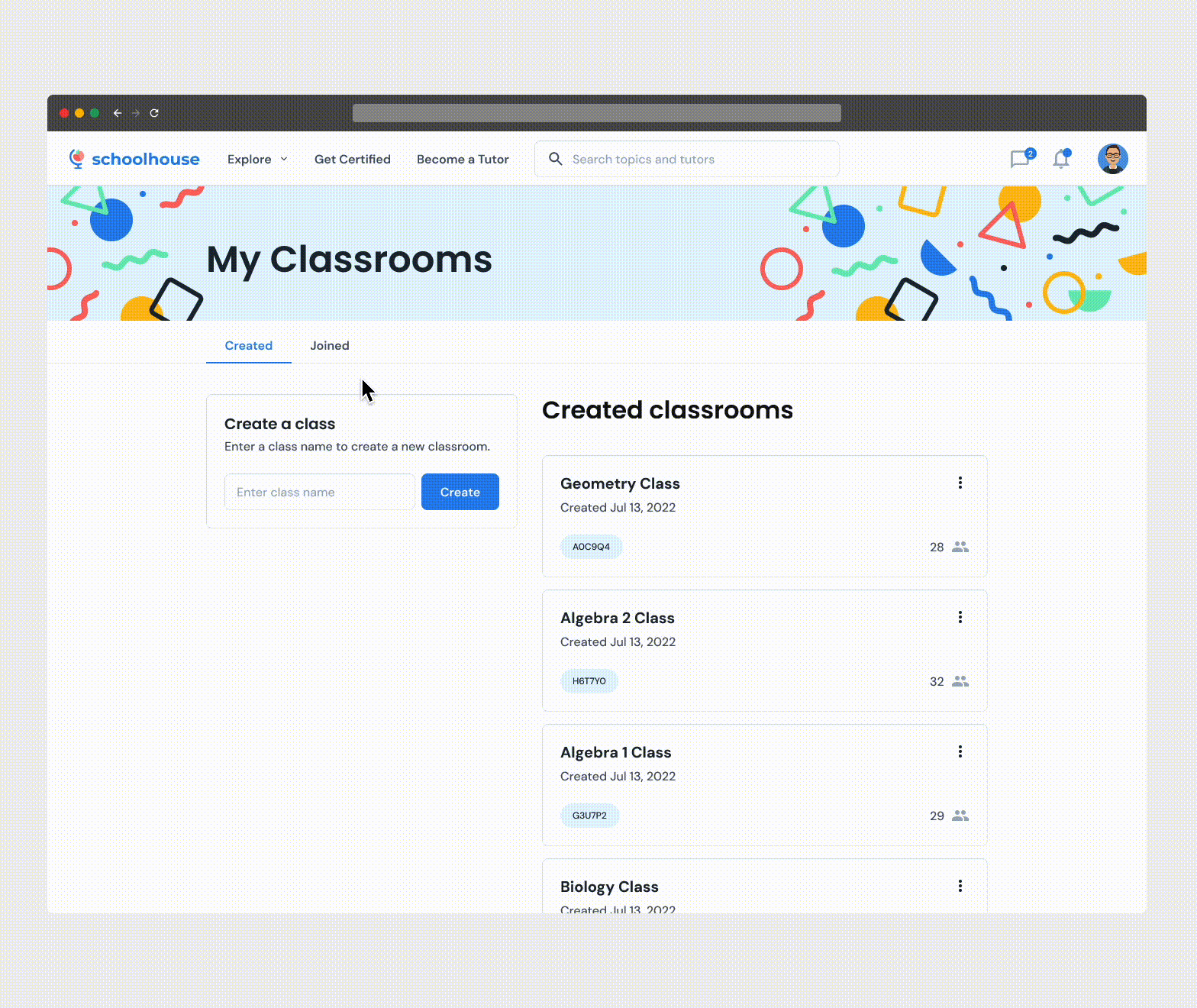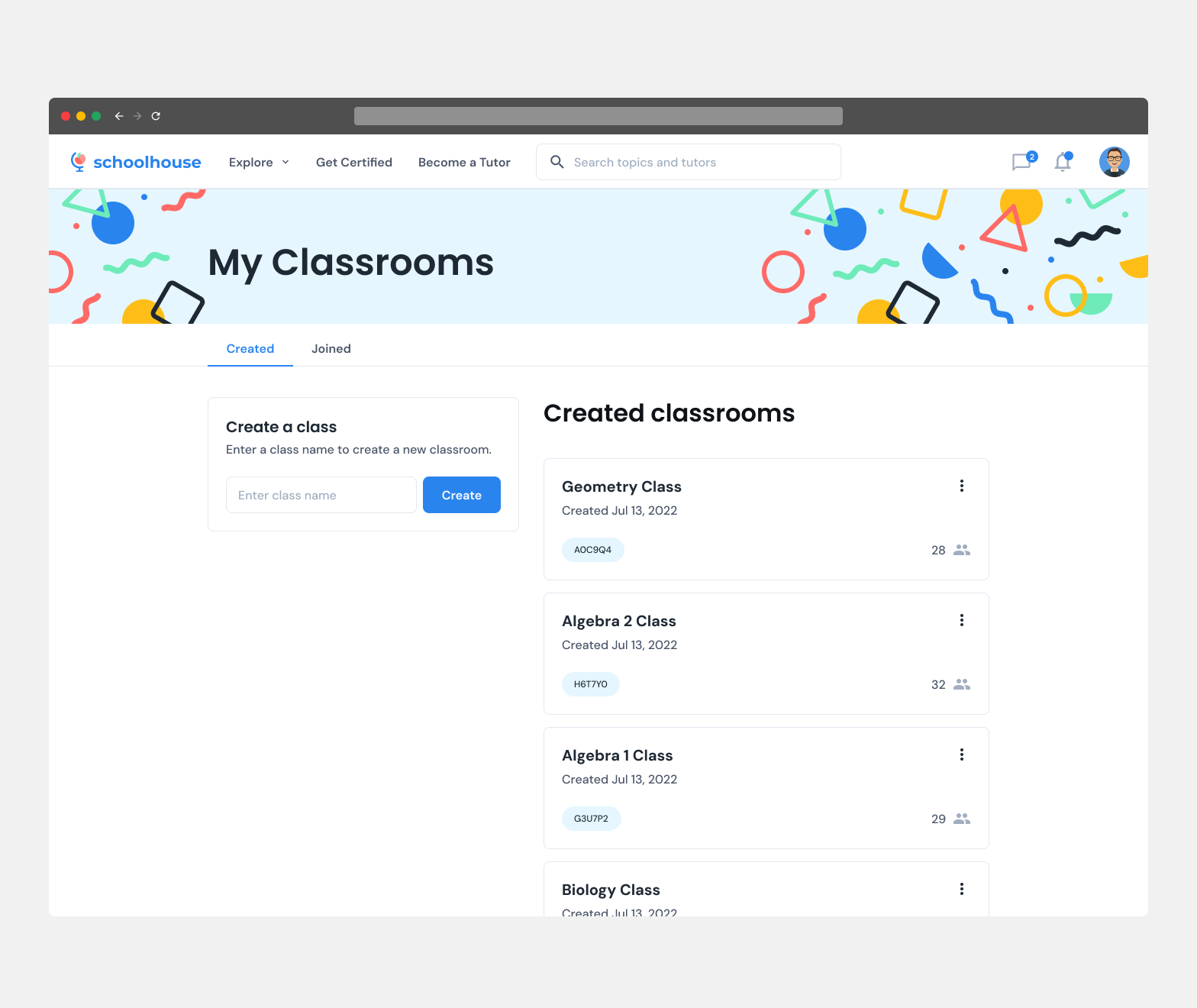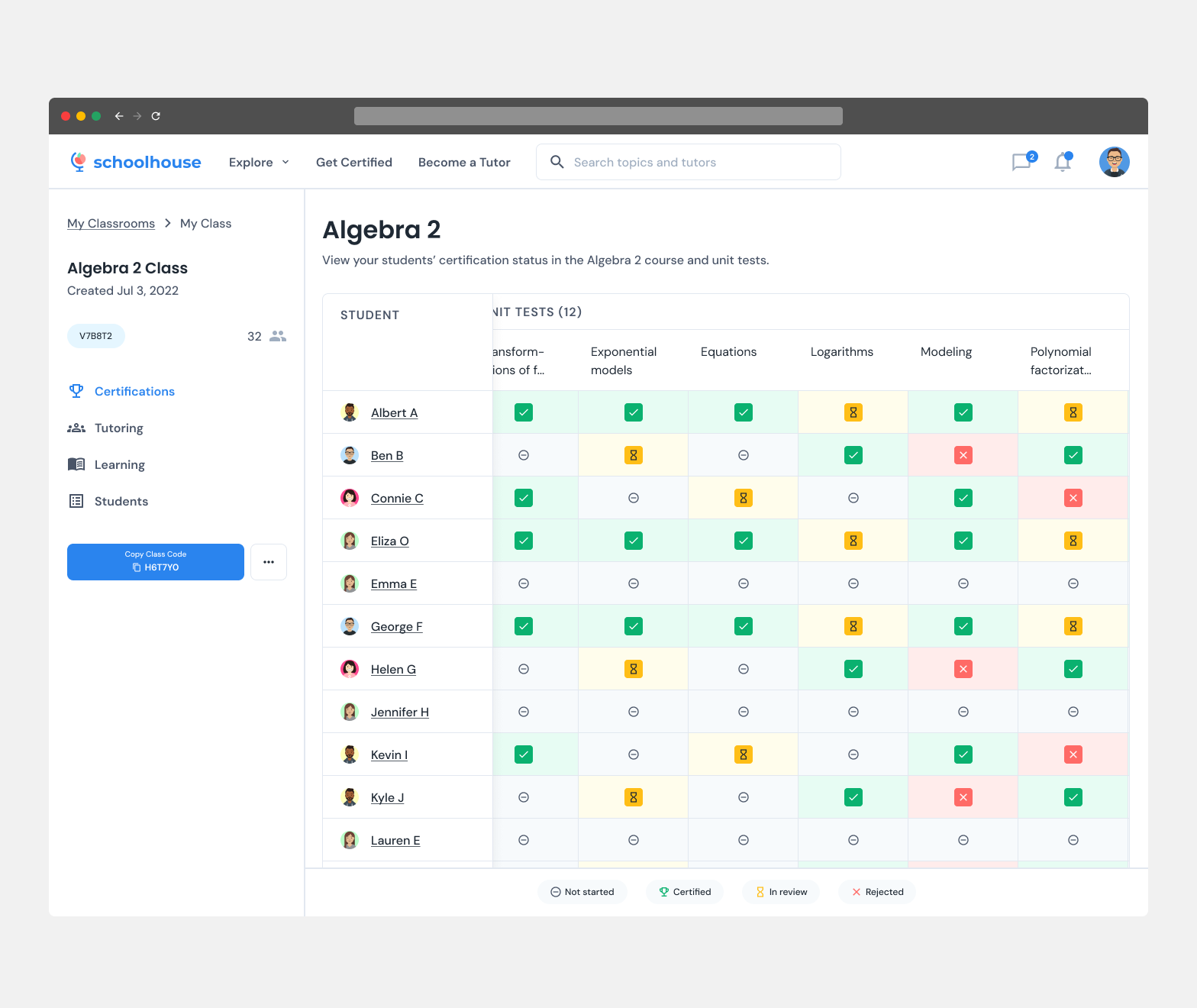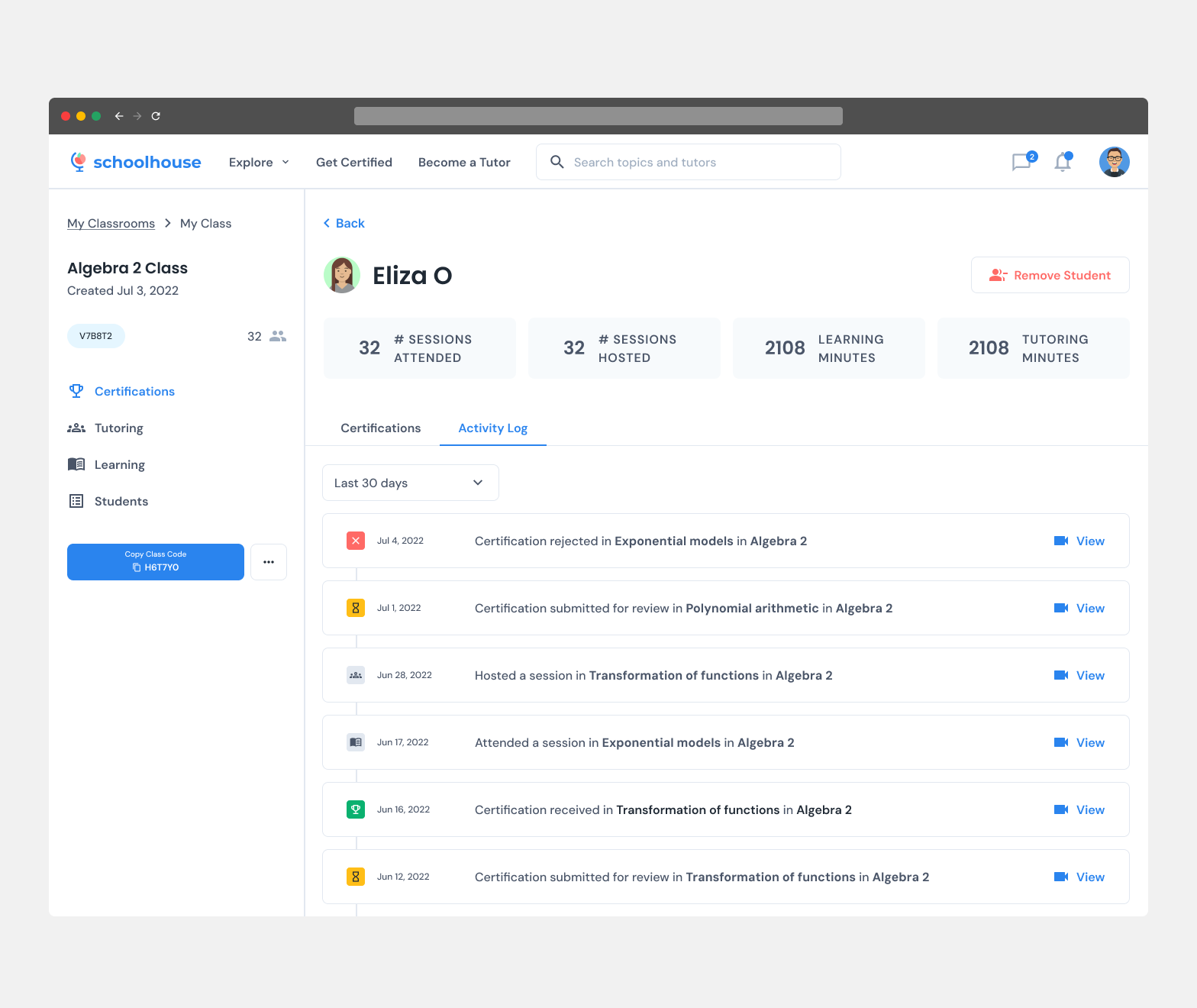
Leading the 0-1 design of an online classroom tool to help teachers support students
Role
Product design intern
Collaborators
Senior product designer
Product manager
Engineering lead
Duration
6 weeks
In Summer 2022, I interned at schoolhouse.world, a Sal Khan initiative building ed-tech products. I was tasked to lead design of the Teacher Tools MVP, which was launched to 200+ students and teachers at Khan World School (KWS). After the first school year, while using Teacher Tools and schoolhouse.world products, student test score improvement was reported to be ~4x the typical growth across math, reading and language arts.
Problem
Teachers need to understand the needs of their class so they know who to support and how. However, KWS is fully remote and self-paced. Each student in a course will progress at their own pace, so teachers don’t know which of their students are struggling vs. advancing.
Business impact
Why was this problem important to solve?
Both Khan World School and Schoolhouse.world world are mission-driven organizations, and work together to transform how we educate. Schoolhouse.world needed to demonstrate that our products can facilitate student-teacher success better than the status quo.
Solution
Providing teachers with the tools they need to support students in a remote and self-paced learning environment.
-
Create classrooms—so teachers can organize materials and manage students remotely between multiple courses
-
Progress tracker—for visibility into student progress by course
-
Individual student reports—for detailed insight on how they can support students who struggle more than others



Learnings
Share work early, even if it’s messy
During one of weekly product-tech-design syncs, I didn’t feel comfortable sharing my work with team members because I felt like I hadn’t made any decisions and was still exploring options. Upon sharing however, I received very valuable and directional feedback.
Collaborating in parallel with engineers
Because of deadlines, design and engineering worked in parallel. It was difficult knowing their work was dependent on my work; however, I learned to be transparent about my personal timelines and honest when I felt as though I didn’t have a solution right away. To avoid ad-hoc design solutions, I felt a responsibility to state when I needed an additional day to explore alternatives and possibly review with my senior designer. In general, transparency meant we could work together to figure out our dependencies.